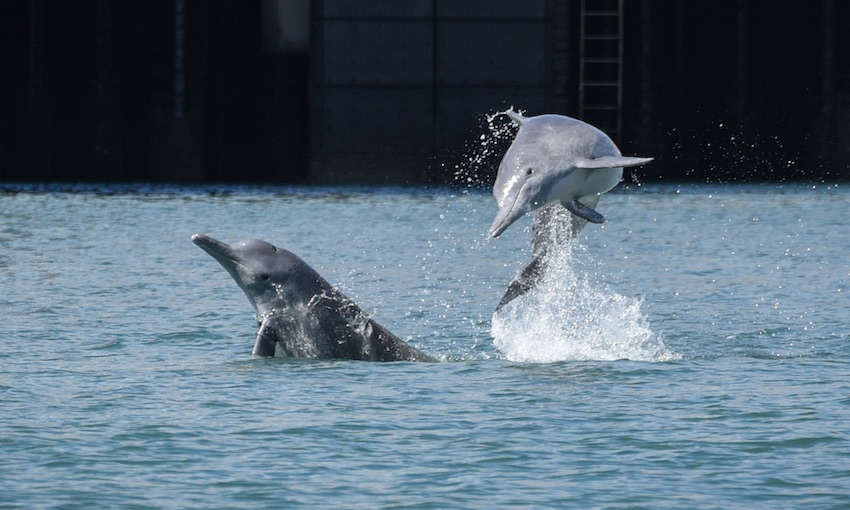INITIAL data from a monitoring project to help preserve two dolphin species has found almost 250 healthy individuals in stable populations near Townsville.
Led by Flinders University in collaboration with Southern Cross University and Blue Planet Marine, the project is studying the ecology of the dolphins in the Townsville region in relation to construction activities associated with the Port of Townsville’s $193m Channel Upgrade Project.
Port of Townsville general manager infrastructure and environment, Marissa Wise, said the monitoring work, which would help to ensure the long-term conservation of the dolphins, was an important element of the project.
“The port is investing $17m on environmental monitoring and management solely associated with the Channel Upgrade Project to ensure minimal impacts on the mega-fauna, corals, bird-life and seagrasses in Cleveland Bay and the surrounding area.
“We are extremely mindful of the delicate balance within the waters in which we operate, so it is heartening to hear from independent environmental scientists that our dolphin population is healthy and remains unaffected by port-related activities.”
Project leader Flinders University associate professor Guido J.Parra says a pre-construction survey was undertaken last year, providing important baseline data on the distribution, abundance and preferred habitats of snubfin and humpback dolphins under pre-construction conditions.
“Boat surveys in 2019 estimated the total number of snubfin dolphins using Cleveland Bay at 54 individuals and at 89 individuals for Halifax Bay. The total population size of humpback dolphins was estimated at 30 individuals for Cleveland Bay and at 71 individuals for Halifax Bay,” he said.
“Land-based surveys of key areas where port construction activities will take place observed snubfin and humpback dolphins frequently throughout different times of the day engaged mainly in foraging and travelling behaviours.”
Associate Professor Parra also found that the distribution and population estimates for snubfin and humpback dolphins was consistent with surveys undertaken 20 years-ago, indicating that populations have remained relatively stable over time.
“It also shows that the coastal waters off Cleveland Bay and Halifax Bay continue to support important populations of Australian snubfin and humpback dolphins.”
“Further surveys during and post construction activities will allow us to assess if there is any significant impact on the dolphin’s population status.
“Importantly, the baseline assessment indicated that present levels of maintenance dredging and vessel traffic do not seem to influence the patterns of attendance and behaviour of dolphins around the port area,” he said.
The monitoring and research efforts will support adaptive management initiatives so that authorities can learn and improve the way that Australian snubfin and humpback dolphins are protected and managed using the best available evidence.

